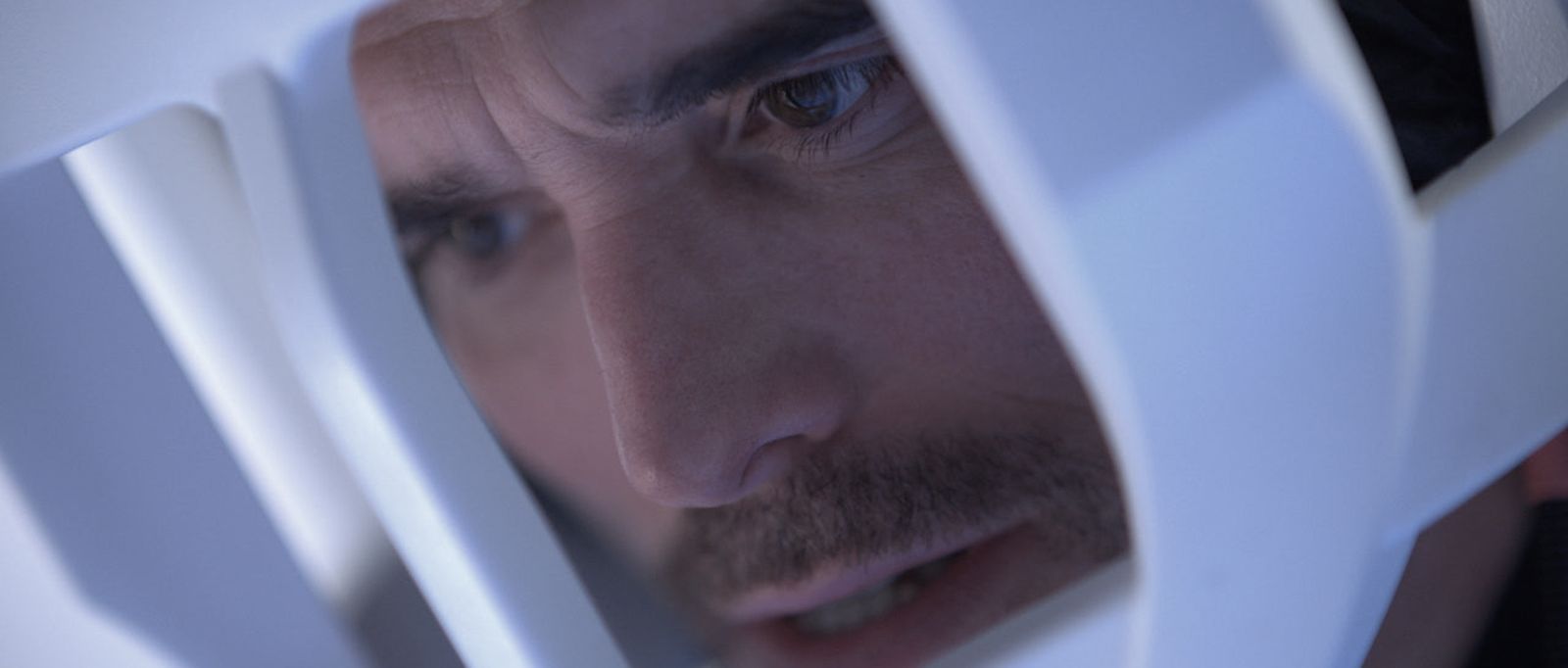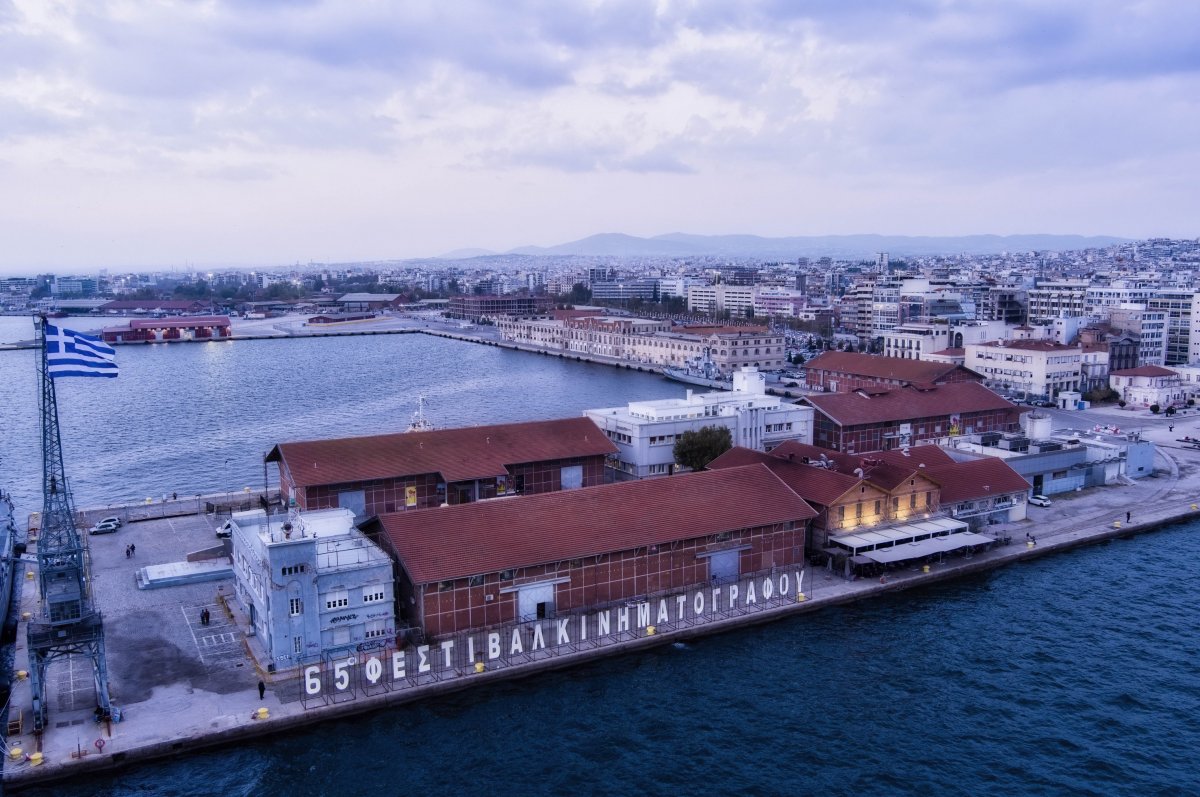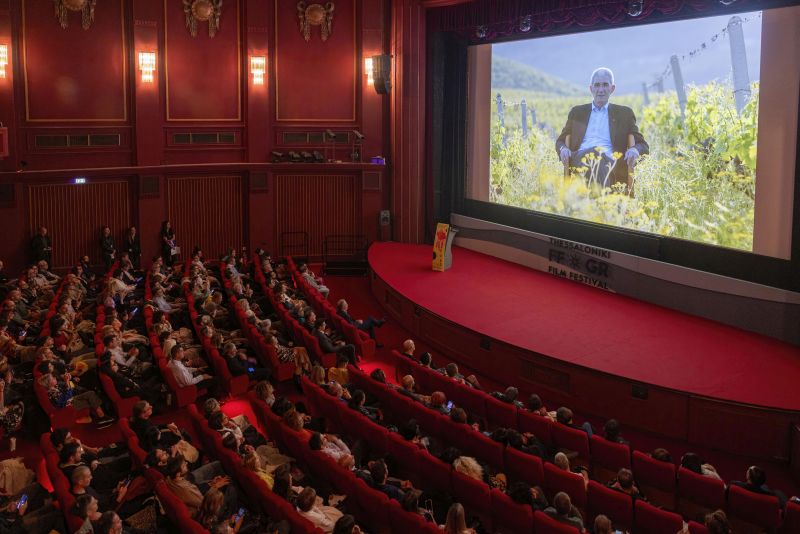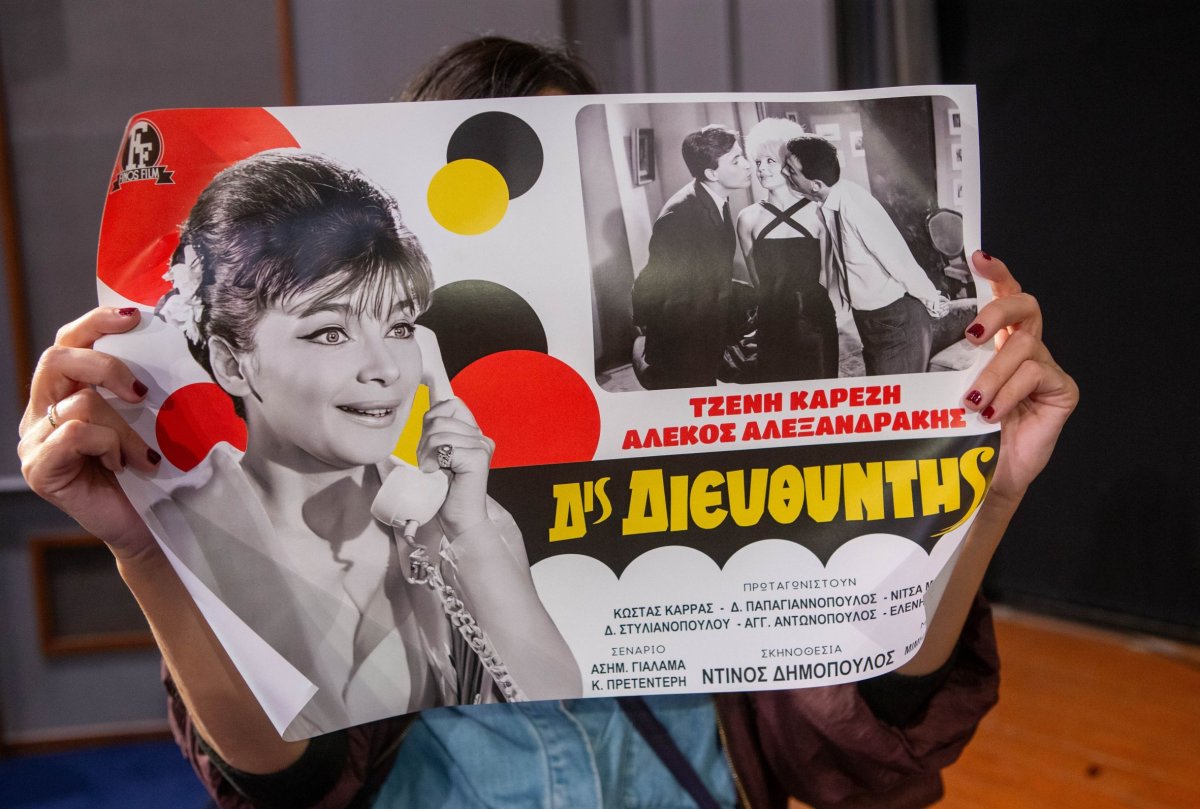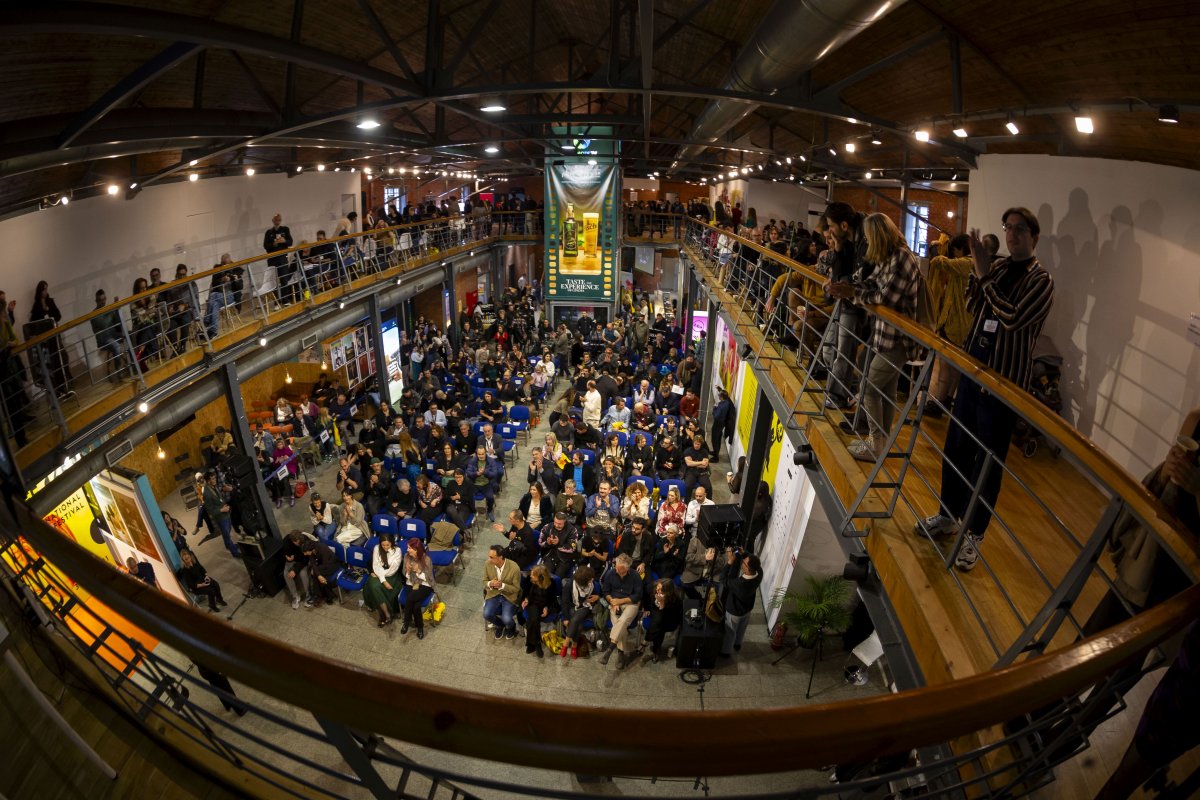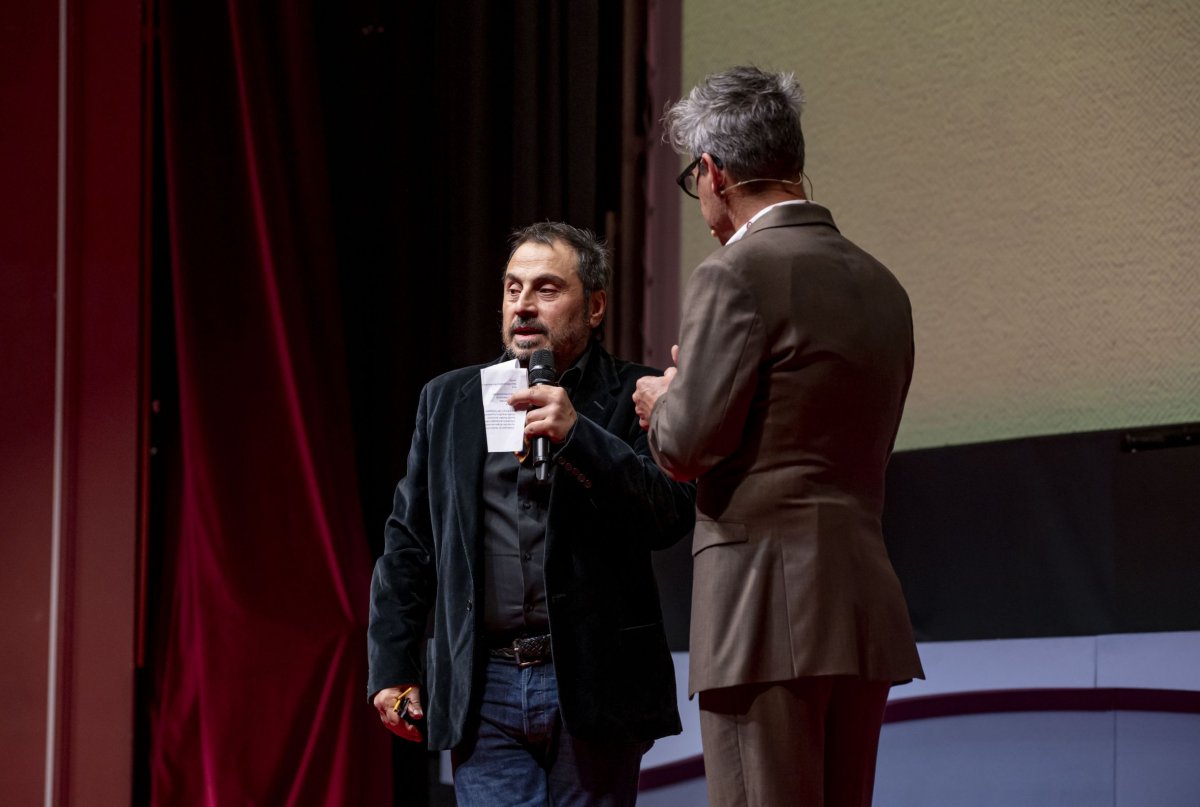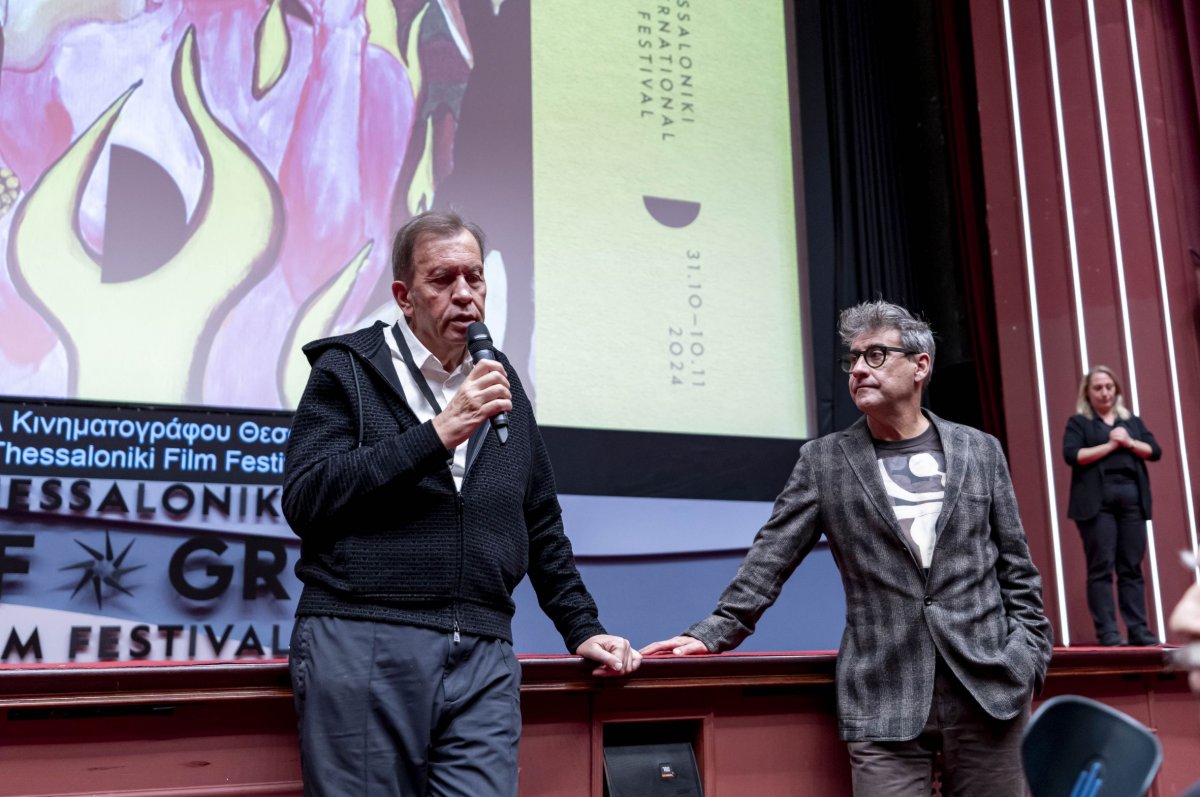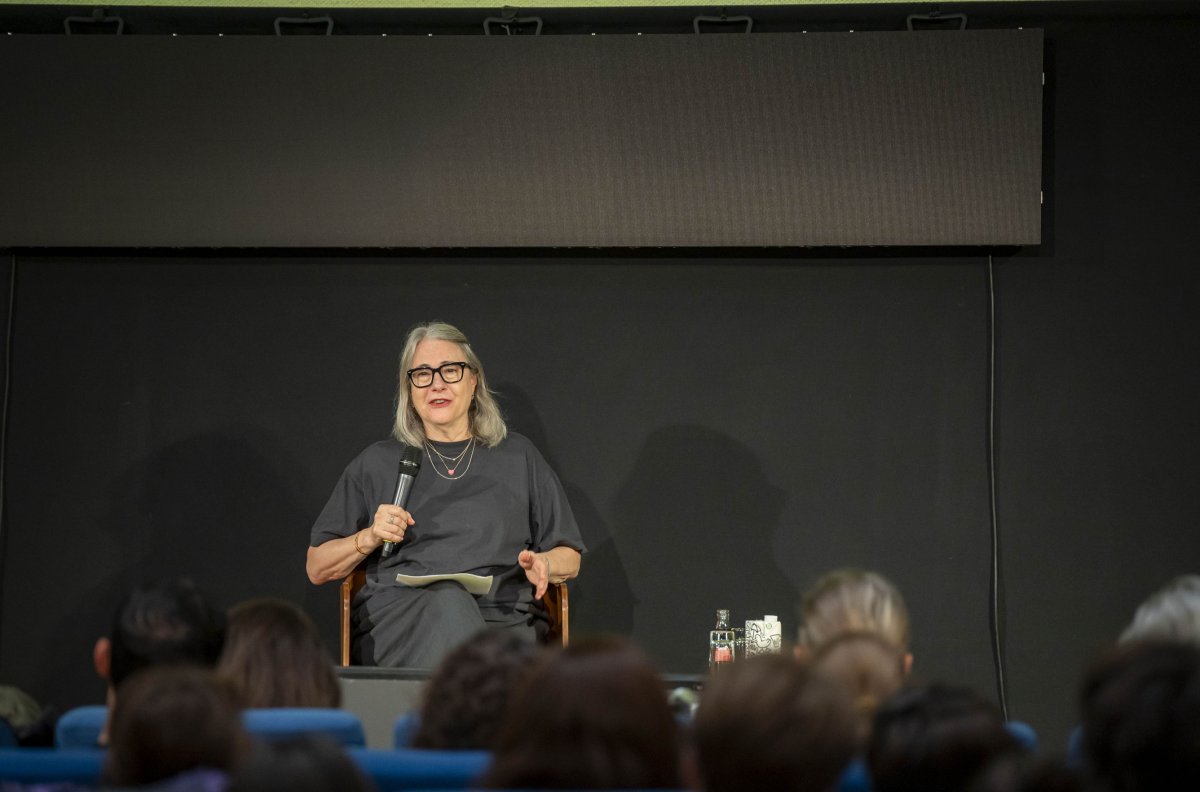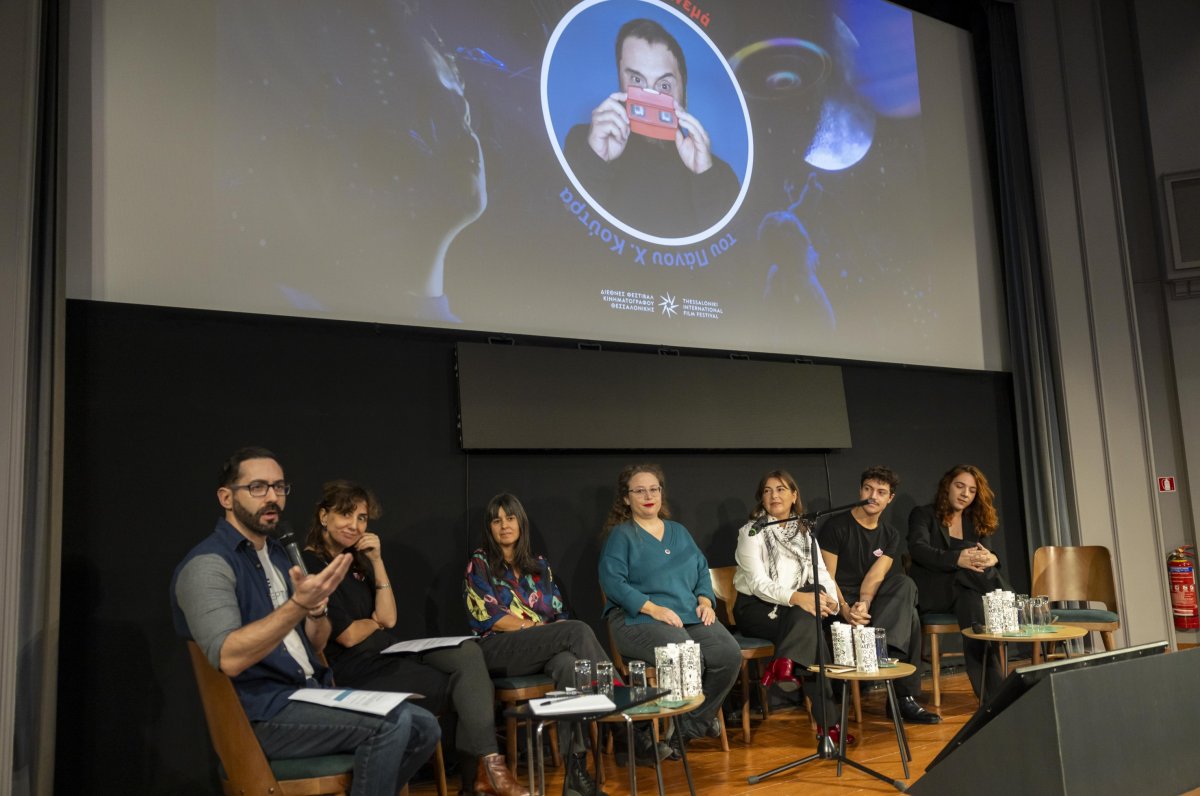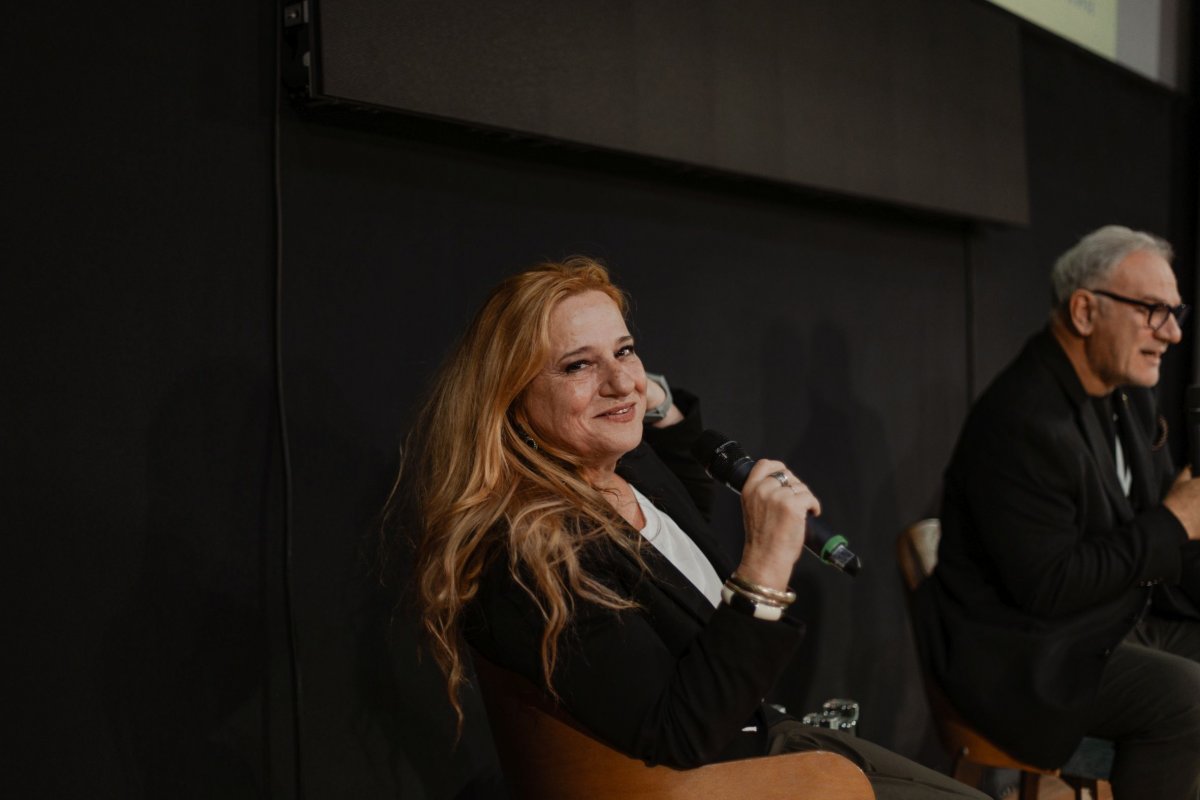The 65th Thessaloniki International Film Festival will host a tribute to the multifarious, subversive and versatile Danish artist Jesper Just, who uses cinematic language to cope with and transform the Hollywood take on cinema, the prevailing constructs of masculinity and femininity, as well as the prejudice related to the representation of minorities and the people with disabilities in the dominant culture. Within the framework of the tribute, the audience will have the chance to watch 18 short films directed by Jesper Just, among which his latest work titled Interfears (2023) and starring Matt Dillon, which will be screened under the form of visual installation at MOMus-Experimental Center for the Arts (Warehouse B1-Port of Thessaloniki / Working hours: 10am-10pm daily, for the 11-day duration of the 65th TIFF). The convention-breaking Danish artist will attend the 65th Thessaloniki International Film Festival to present his work to the audience in an event that will take place on Monday November 4th, at 5pm, at MOMus-Experimental Center for the Arts (Warehouse B1, Port of Thessaloniki).
Jesper Just is a Danish artist who lives and works in New York. From 1997 to 2003, he studied at the Royal Danish Academy of Fine Arts. His work has been presented in several solo exhibitions, in venues such as the Galerie Perrotin in Tokyo, Japan (2021) the Galerie Perrotin in New York, USA (2020), the MAAT Lisbon, Portugal (2019), and the Palais de Tokyo in Paris, France (2015), whereas he has work in museums including the Guggenheim Museum in New York, Tate Modern in London and the Museum of Modern Art in New York. In 2013, Jesper Just represented Denmark at the 55th Venice Biennale.
His short films and multi-projection video installations question the mechanisms of cinematic identification and break viewers’ expectations of narrative closure by unfolding surrealist, emotionally ambiguous, open-ended, and often silent situations or encounters. Interested in how public and private spaces define and shape human interactions, Just further plays with the notion of architecture as a performer, to echo and expand his characters’ enigmatic journeys.
He himself describes his work as cut-outs; fragments of longer films that have simply never been shot; pieces of puzzles, the completed bigger pictures of which you can only imagine but will never see, and most likely only exist within his mind – though even this is not a certainty. For it is precisely in their fragmentary nature that their otherworldly, intense, and magnetic allure lies, after all. If there is a thread running through all of Just’s work, this is none other than his need to transform the viewer into something more than a passive, by-standing observer. Bringing you in on the act and making you complicit. Confronting you with stimuli, cerebral synapses, sensations, even physical reactions that you have all but stopped associating with cinema in your brain.
The tribute’s films:
No Man Is an Island (2002)
The work examines the relationship between two juxtaposing characters. An older man is seen dancing wildly in a courtyard. In front of him, a younger man sits on a bench, sobbing. The relationship between them is ambiguous. The older man’s dance is clearly intended for the younger man, but the reasons behind it are left unknown. While a first assumption might be that they are lovers, as the film continues the relationship appears to be more platonic, perhaps that of a father and son, or of a mentor and his apprentice. Just’s strength is in the way he leaves it up to the spectator to decide on the back story of the characters he presents. By eliminating verbal communication and using sound and hand gestures, the spectator must empathize with the characters in order to understand them.
This Love Is Silent (2003)
The video throws into question, in a surprising way, our perceptive habits and expectations. Conjuring up, through its form and atmosphere, the style of the Nordic whodunnits, this short film presents all the characteristics of a large cinematographic production. The moment when the young man gets out of the car boot and sings the love ditty “Cucurrucucú Paloma” by Tomas Mendez, in a soft voice, increases the suspense and creates a disturbing effect on the viewer, even more so because as the story unfurls it does not correspond to what is expected. The film plays with the discrepancy between the expectations of the viewer and the development of the narration which is concentrated, in a precise and convincing manner, on the subtleties of human expression, on looks, gestures and emotions. Astonishing the viewer on many levels, the film avoids, however, any irony or derision.
No Man Is an Island II (2004)
Allowing us to explore the architecture of anticipation, staged intimacy, and choreographed seduction, the camera from the stage pans the interior of a strip club. We see five men spread throughout the room, two of them a couple. They sit stiffly, staring into space. Then they begin to move, drinking beer, smoking cigarettes. The camera zooms in on their faces. A young man who breaks out into a sentimental song and a pony-tailed man at the bar with skeptical expression and uncertain gaze are particularly noticeable. We instinctively feel that there is a closer bond between these two men, a suspicion that increases, when the young man begins to weep as the man at the bar stands, assuming the pose of a Christ, his deep voice providing a resonant background bass tone. With the situation’s oblique references to the chorus of the Greek tragedy, musical performances and kitsch painting, Just provides us with images that refract and refine traditional ideas about male sorrow, sentimentality and social intercourse.
Bliss and Heaven (2004)
Melodramatic but never campy or over the top and with Hollywood-quality production values, Just’s films probe vulnerable, ordinarily well-armored zones of the masculine psyche like grief, same-sex love, Oedipal conflict, and spiritual desire. In Bliss and Heaven, a young man dressed in jeans and a vest walks determinedly through a wheat field under the hot, midday summer sun in an eerily quiet landscape. This scene is interrupted a few times by a view of the field shot from within a noisy truck moving on a road parallel to the field. When the vehicle approaches and passes him by, the young protagonist hides in the field and watches the truck driver – an older man resembling him and dressed in the same way as him – disappear inside the boot of the vehicle that is now parked in a parking lot of what looks like a deserted power station… A film Just made shortly after his graduation from The Royal Danish Academy of Fine Arts in Copenhagen already encapsulates the key themes and concerns he will unfold later in his work.
A Fine Romance (2004)
A young woman sits in a cubicle in a strip club. She is obviously afraid, and in an inner monologue, she memorizes passages from the fairy tale The Twelve Dancing Princesses. Just like the princesses in the fairy tale, she has eloped in order to dance her secret dance. This time, however, her prince is no prince in a shining castle. Rather, he is a bloke at a strip club. Does he desire her too? Do they know one another? When she finally tries to kiss him, he thrusts her aside, and the situation suddenly changes character… A video that not only dialectically inverts the power struggle in the gaze, but also the power struggle at work in a topos that functions as a crucible of unspoken – or unspeakable – fantasies and motives.
The Lonely Villa (2004)
Several men sit in silence, waiting for the telephones in front of them to ring; a telephone starts to ring during the first frame, but it does not belong to the man who anxiously answers it. The tense opening section develops into a father and son unsettlingly singing a duet over the telephone, an old 30s love song, while the other men in the room provide a chorus for the eerie libretto. Another tragicomic episode, where the male protagonists (lovers or companions or fathers and sons) experiment with the different possibilities of their own identity and their sexual roles.
Something to Love (2005)
Jesper Just relies on cinematic conventions but also deconstructs them. His plots are neither linear nor coherent, but they totally surrender to the sentimental and emotional triggers, while shattering the gender typing constructed by mainstream cinema. In a film charged with a film noir atmosphere and other familiar ghosts, the protagonists are a young man, an older man, a young woman, and an underground parking lot (devoid of people and cars, reminiscent of the sets of so many thrillers). When the older man is watching the young couple kissing, a whole history of cinematic gazes and scopophilia in classical Hollywood cinema emerges; however, here the woman is duplicated into a couple and it is the young man who turns to be the object of longing and yearning. Even more so, it is the kiss itself, or passion itself, that is signified as the “something to love,” the object of desire.
It Will All End in Tears (2006)
A depiction of feelings of partly mystical love between two men of two different generations. The first of three acts which takes place in New York chooses a hazy oriental garden as its setting where a man wanders about looking for a young man. The second act refers to a citation by Jean Genet from the Miracle de la Rose. This time the protagonists are in a deserted courtroom. Men who could be confused with the jury start screaming in a rather comical manner the words from Cole Porter’s famous song “I’ve Got You Under My Skin.” Finally, the last act takes place on the roof of Silver Cup film studios in Brooklyn, where we see the two men before watching some fireworks that illuminate the New York skyline. Despite changes of decors and action which could seem beyond understanding, the story of this meeting presents an astonishing melodramatic continuity.
Some Draughty Window (2007)
An elderly subject appears as though in the midst of a larger narrative. As the figure exhales onto the mirror of a public restroom, a mist slowly fills the space, and visions of a forest emerge. In this shifting environment, the individual begins to float, their features slowly morphing from masculine to feminine. Corporeal, social, and environmental forms are all transmuted in the enveloping, chimeric fog. Defying linear storytelling, and other filmic tropes, Just’s work disrupts conventional codes of gender, age, and identity, invoking themes of representation, self-fashioning, and agency.
A Vicious Undertow (2007)
In a film shot in 16 mm, a strange relationship is articulated in the meeting of gazes and dancing, through the sensuous leitmotif of the whistling that introduces them. A Vicious Undertow is built around a woman figure of uncertain age, whistling the tune of “Nights in White Satin” in a bar. The camera glides over her neck, her skin and her lips, and then approaches a second, rather young woman. A man joins them. In a succession of quick shots, the camera focuses on the older and the younger woman dancing a waltz together, then on the man, again dancing with the young woman. Suddenly, the heroine stiffens and makes for the exit. Propelled in the middle of the night onto the steps of an endless staircase, she seems to be trying to escape melancholy or fate by moving through a space that is out of time.
A Voyage in Dwelling (2008)
A film anchoring the artistic work of Jesper Just between performance and cinema, with a title that refers to the theme of introspection, that the artist is constantly exploring. In this work, the heroine, played by Danish actress Benedikte Hansen, finds herself trapped in a long bluish corridor. Places staged refer to the country of origin of the artist – besides, in the artist’s own words: “I’m very interested in the idea that a place can perform, just like people and characters perform.”
Sirens of Chrome (2010)
Shot in downtown Detroit, the work follows four Afro-American women in a car as they drive through deserted city streets in total silence. The palpable tension in the Chrysler reflects the disturbing atmosphere outside. When they come onto the roof of an old theater, now a parking lot, another woman appears in the picture. Here begins a strange and spellbinding confrontation. As curator Jennifer Frias writes, “Just’s works are often emotionally charged with ambiguous narratives that never reach a moment of conclusion. Gender, relationships, and identity are recurring themes in his work. […] Sirens of Chrome similarly takes on the complexity of the human condition, but shifts its focus on the representation and interpretation of African-American women and women in general.”
This Nameless Spectacle (2011)
This Nameless Spectacle takes its title from American poet William Carlos Williams’ poem “The Right of Way.” In this poem, Williams describes the fascination with which we observe anonymous actions, the “nameless spectacles” that surround us every day, everywhere. In the film, Just tracks his two protagonists through Paris’ famous Buttes-Chaumont park. This Nameless Spectacle is presented on two massive panoramic screens that face each other. The action is mirrored and split between the two screens, bouncing from one to the other. This choreography is intended to wholly envelop the viewer in both the imagery and the narrative, simultaneously rendering the viewer a witness and an important player in the action. Dependent on the viewers’ gaze and attention that focuses on the anonymous and nameless spectacle witnessed within the film, the story is complete.
Llano (2012)
Llano is set in the ghost town of Llano del Rio, founded in 1913 by the socialist Job Harriman – at its origin, the promise of an ideal community; in its present state, an empty, forgotten space. Llano del Rio’s architect, Alice Constance Austin, imagined a proto-feminist gender-neutral design, including communal kitchens located in tunnels between the homes, intended to liberate women from domestic work. But the failure of irrigation and water supply finally caused the project, and the town, to be abandoned, nearly a century ago. Observing this desert and the vestiges of this utopian city in the sheeting rain, it becomes evident that the film seeks to explore this ruin, both as a concept and as a historical and archaeological object, full of inherent dualities. At the center of the ruins, a woman struggles to prevent the collapse. Like Sisyphus pushing his rock, she replaces the bricks and stones falling from the already disintegrated structure. According to Just, “Llano is a ruin of a place that is no longer, but also a place that really never happened. Here, we have a double meaning – a strange mix of utopia and dystopia, filled with failure as well as potent ideals.”
Continuous Monuments (Interpassivities) (2017)
The film shows musician Kim Gordon, former bassist in the legendary band Sonic Youth, in a landscape delineated by a long fence on the US-Mexico border. Gordon, donning a tutu and cowboy boots, runs a stick along the border fence, creating a rhythm in a childlike gesture, but one executed with intention. The wall, a symbol of division and divisive politics, suddenly becomes a musical instrument. In reassigning its meaning and transforming it into a productive object capable of creation, the power structures between architecture, territory, and function are rearranged. Rather than a border, the wall becomes a monument, stripped of its intended pragmatic function, linking the viewer through space and sound through a universal experience of sensation and impulse, not void of humor and defiance.
Circuits (Interpassivities) (2018)
Close-ups and parts of bodies belonging to a group of ballet dancers: Lying prone and passive, the dancers’ bodies are connected to electrodes that cause their muscles to jerk and contract. Usually, our movements are triggered by electrical impulses inside our body. Here, that control has been allocated to external electronics instead. The dancers’ bodies, usually responding actively to music with empathy and sensitivity, are reset and rebooted: they become vehicles for a dance performed by a computer interface. This work is full of circuits: the circuit of bodies, the circuit between music and body, and the circuit between the individual parts of the fragmented image. Electricity, music and bodies, sensitivity and control: all these aspects shift inside the wider circuit of people, things, and technology.
Servitudes [film #7] (2018)
Originally conceived as an immersive architectural installation with eight synchronized nine-minute films on a loop, Servitudes investigates how we comprehend agency as well as the conventional understanding of the “able” or “disabled.” This seventh installment introduces three characters: a woman, who embodies the media-created ideal of youth and female beauty and seems incapable of acting upon her desires; a child afflicted by a neurological disorder that affects the motor and sensory nerves, and a mediator between the two humans, namely the iconic One World Trade Center in New York, a phantom limb occupying the void left by the traumatic loss of the Twin Towers. The three protagonists of the piece appear as hybrids of machines and organisms, and their existence blurs the boundaries between fiction and experience. The work brims with a restrained yet intense kineticism, as its two mobility-limited protagonists internalize the skyscraper’s haunted architecture.
Interfears (2023)
In his new film Interfears, Jesper Just explores the emotional topography of an actor’s brain. Encaged in an fMRI scanner, the actor is reciting a monologue while the machine captures and presents his brain waves in two and three-dimensional representations. By combining enactments of feelings with fMRI technology, the film turns a clinical gaze on emotions as cultural artifacts and on emotional representations as artificial, whether played out by an actor or depicted by a machine. The claim that emotions are always produced in a socio-culturally contaminated environment leads to the major point that emotions in general are in fact to a large degree performative – we can learn to do them right, and we follow protocol because we like to be readable as emotional subjects. The film takes this statement further by letting the actor present a character who has trouble feeling emotions, while at the same time monitoring the actor’s actual brain as it goes through pretended emotions. Here, fiction and anatomy come together highlighting connections between role-playing and everyday effects. If feelings are cultural objects, they can be staged and exhibited; here, they come as moving pictures.


